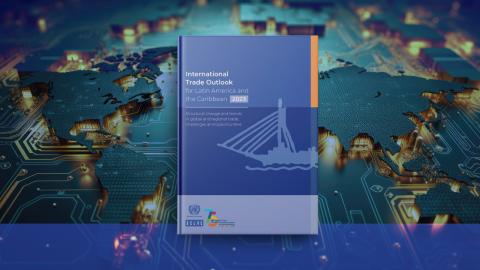Announcement
The main goal of the fair trade movement is to guarantee that small-scale farmers and artisanal producers have more direct access to the market for their products, in more just and equitable conditions. It seeks to foster responsible consumption through more sustainable commercialization channels that are based on solidarity, recognizing the work of producers and their organizations. In this way, fair trade aims to reduce inequalities through greater equity and equilibrium in trade relations within countries as well among countries in the global north and south.
This movement, which fosters solidarity-based production and consumption patterns, is an important ally for the United Nations 2030 Agenda and its 17 Sustainable Development Goals (SDGs), since it promotes more inclusive and sustainable development, according to a new document published jointly by the Economic Commission for Latin America and the Caribbean (ECLAC) and the Latin American and Caribbean Network of Fair Trade Small Producers and Workers (CLAC).
The document, entitled The Contribution of Fair Trade to Sustainable Development, indicates that for the last several decades, fair trade has proposed a new way of understanding production and consumption, using a multidimensional perspective that involves economic, social, environmental and political aspects. In this sense, its influence is reflected in several of the SDGs.
First, the movement is an example of a Global Partnership to achieve the Sustainable Development Goals (SDG 17). Second, it contributes to eradicating poverty and guaranteeing a minimum of economic resources, by establishing international trade in more equitable conditions, between small producers and consumers (SDG 1). Third, it helps with food security and sustainable agriculture by promoting activities and knowledge transfer to increase productivity in organizations of small producers (SDG 2).
Fourth, it seeks to achieve gender equality by promoting the full participation of women, with equal conditions in productive and trade-related work (SDG 5). Fifth, the movement promotes the conditions for decent work and seeks to eradicate forced and child labor. In addition, it supports the freedom of association, collective bargaining and non-discrimination (SDG 8).
Furthermore, it proposes a multi-stakeholder development approach that includes diverse actors in global value chains: producers, workers, cooperatives, businesses, exporters, importers, supermarkets, specialized stores and final consumers. It is also multi-level, because the local, national, regional and global levels have a shared responsibility and build together new paths for sustainability.
The document provides an overall panorama of fair trade in the region, concentrating on the experience of CLAC, and analyzes some examples of political and social advocacy in national contexts.
In particular, it examines the experiences presented at the “International Fair Trade Gathering: A Partnership for Sustainable Development,” which took place on May 10-11, 2017 in La Paz, Bolivia. Participants in that meeting learned about the activities of organizations and producer networks from the host country, Chile, Colombia, the Dominican Republic, Ecuador and Peru.
The book presents a characterization of this movement and CLAC’s historical and institutional development in the region. It also gives an overview of the production, employment, exports and consumption associated with fair trade. Along with reviewing academic literature on the impact of fair trade in Latin America and the Caribbean, it highlights six cases (Bolivia, Brazil, Chile, Colombia, the Dominican Republic and Ecuador) of advocacy at a local or national level. Finally, the publication points to some potentialities for expanding the impact of fair trade in the region.
For more information, also visit ://biblioguias.cepal.org/comerciojusto.



